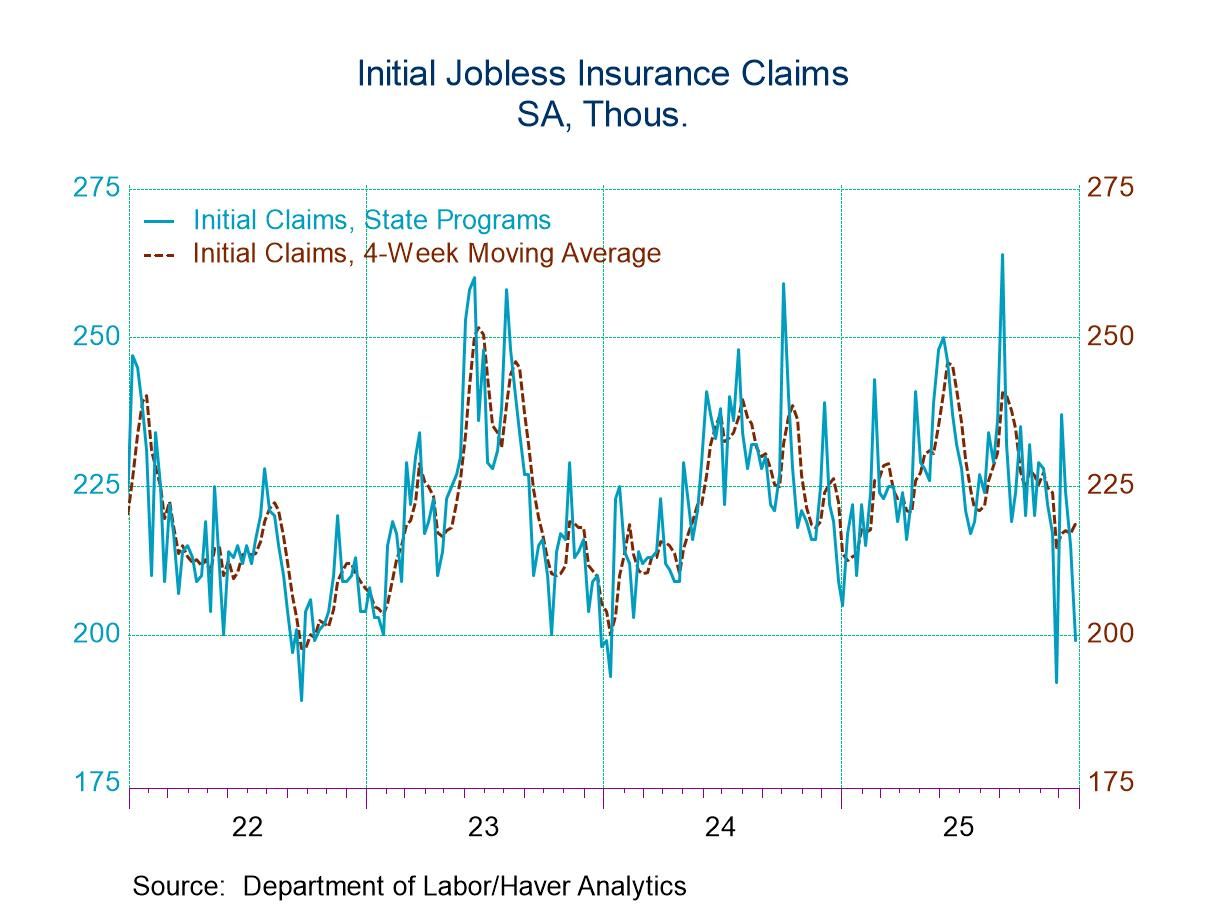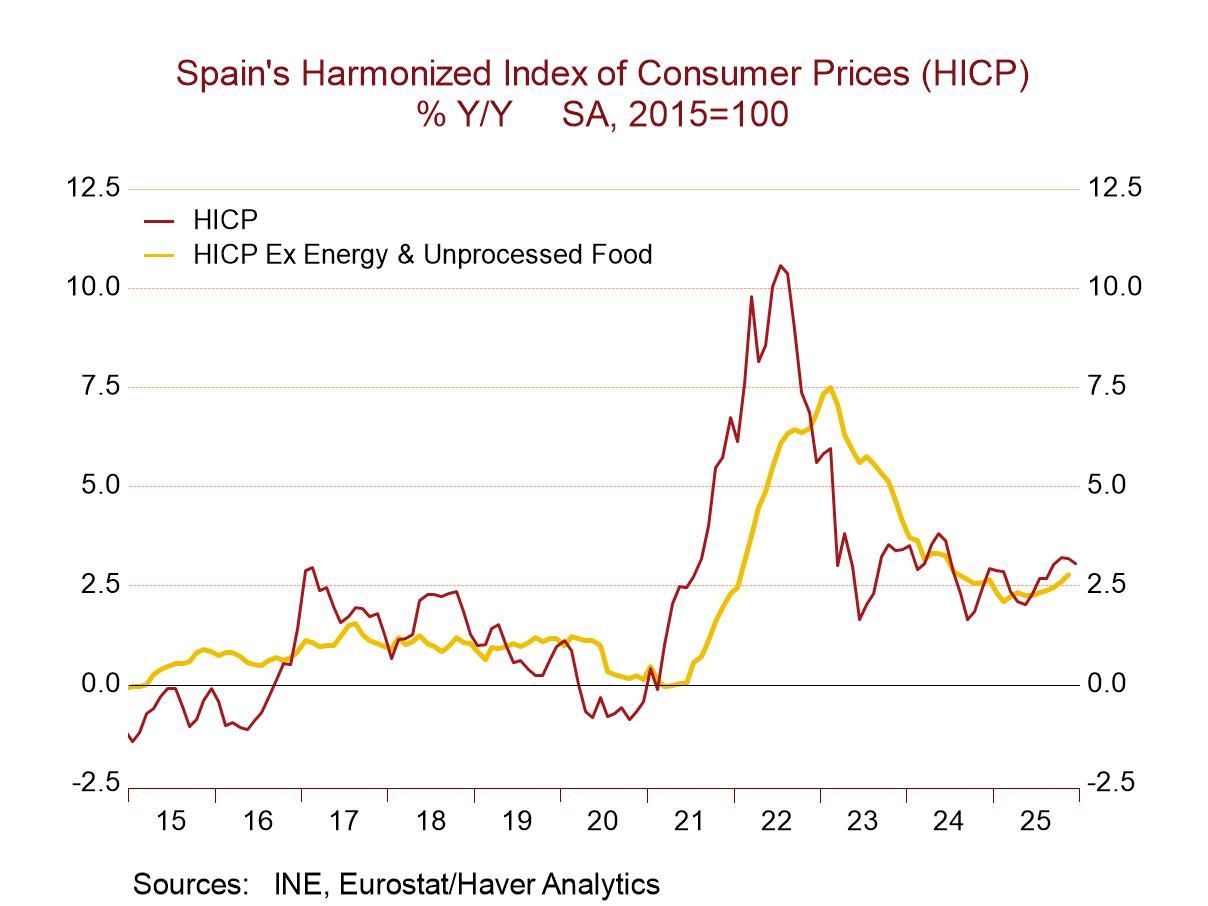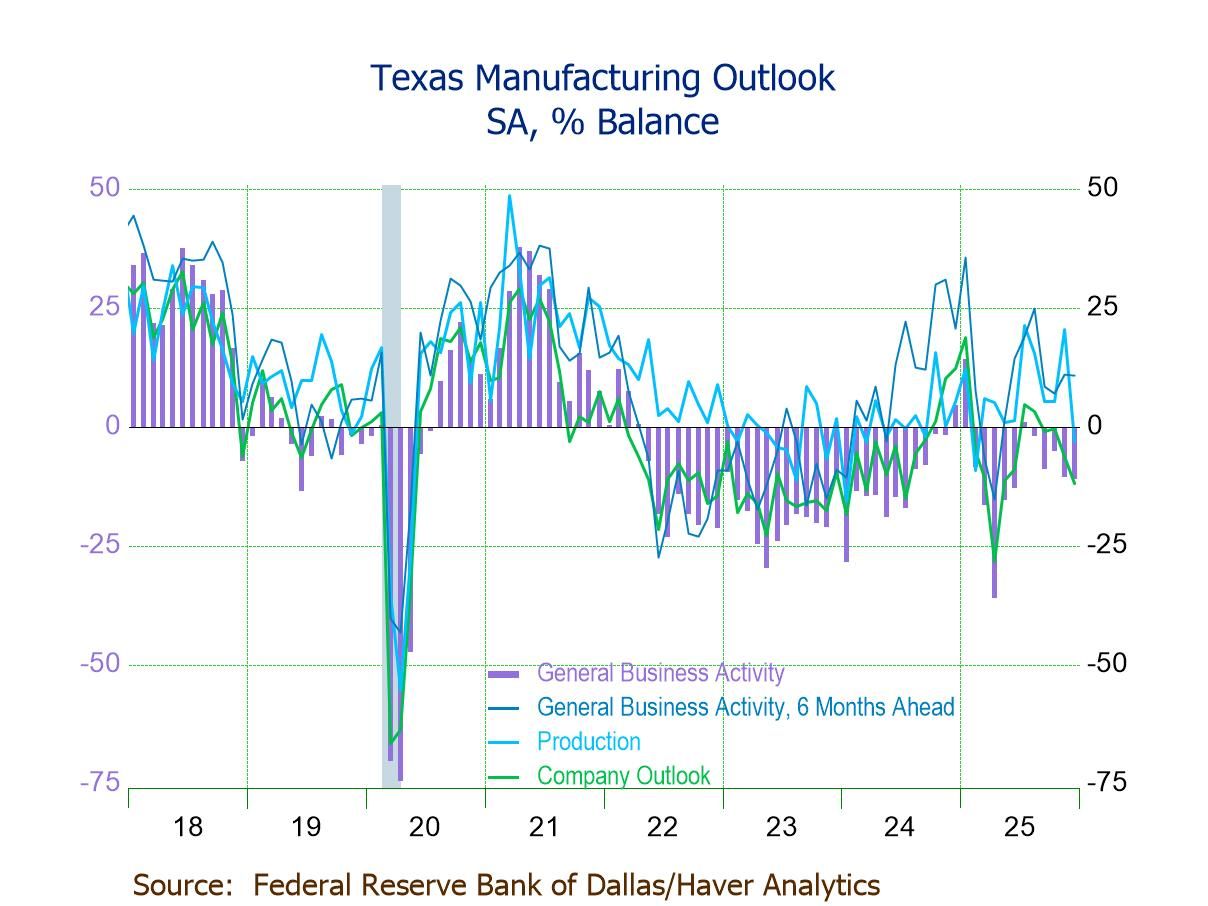UK CPI Continues Hot

The UK inflation metric for September continues to run hot. The CPIH has increased by 0.4% in September after rising by 0.3% in August and 0.7% in July. Its three-month rate of growth is at 5.7%, clearly excessive, relative to the 2% target of the Bank of England, however, there is substantial deceleration from the 6-month annualized pace of 9.4%; the 3-Mo pace also is weaker than the 8.8% pace over 12-months. Still, one year ago this month this measure was increasing at a 2.9% annual rate also above target but this month’s year-over-year gain of 8.8% as well as its lower 3-month pace exceeds the year-over-year pace from a year ago.
The same measure excluding food alcohol and tobacco (that I will refer to as the core) increased by 0.4% in September after rising 0.5% in August and 0.4% in July. This measure runs at a 5.6% annual rate over three months and has accelerated compared to 6-months where the rate was 5.2% annualized. The 5.6% pace compares to a 12-month pace of 5.8%, barely any deceleration at all.
Core shows mixed results: the 6- and 6-Mo pace are off peak; 12-Mo still accelerating All the acceleration in the UK CPI measure over three months is in the core reflecting a diminished rose for energy and food prices; core inflation continues to run hot and shows no real sign of deceleration as it runs at a rather steady too-strong pace.
The diffusion calculation which measures the breadth of inflation across 10 categories plus the core measure shows diffusion at 45.5 in September. For diffusion, the key value is ‘50.’ Above 50 more than half of the components are showing inflation acceleration period to period. Whereas, below 50, more of them are showing deceleration. These measures are comparing the breadth of inflation’s rise or fall in one period to another period. In August, inflation accelerated with diffusion at 54.5 indicating marginally more acceleration than deceleration for the inflation rate. But then in July, despite a headline gain of 0.7%, and a core gain of 0.4%, the month-to-month diffusion measure clocked 27.3 indicating a broad step down in inflation compared to the month before (when the headline rose 0.8% and the core by 0.7% month-to-month).
Sequential data show diffusion at 63.6 over 3-months compared to 6-months. The 6-month measure shows diffusion at 54.5 compared to its 12-month pace. Over 12-months diffusion is at 100 indicating acceleration in inflation across all the categories compared to the inflation rate of 12-months earlier.
The sequential numbers show us that inflation is not simply the matter of one or two categories that are accelerating because the breadth of inflation is clearly across most categories and is not the result of some intense increases in just a few categories with large weights that are driving the headline higher. This is the sort of information that diffusion can deliver to us.
**The United Kingdom continues to have inflation problems **with strong inflation represented in the headline pace and the core pace and across all the sequential time horizons. UK inflation trends muddles without a clear-cut patterns and with the pace of inflation, however measured, simply far too high. The inflation news may not be terrible and may not be a lot worse this month than last month...but it’s not any better either. At the same time the economy is facing weaker growth; that combination of events puts the Bank of England in a difficult spot. UK policy is in an extremely challenging situation. The government's intended fiscal plan has been forced to be withdrawn after it had adverse market effects. But the central bank will certainly stay on a tightening path but will be able to move in a more measured pace because of the encroaching weakness of the economy and some of the financial market jitters that have emerged.
Headline Shows Some Deceleration - Not Yet Evident in the Year-on-Year Pace

Robert Brusca
AuthorMore in Author Profile »Robert A. Brusca is Chief Economist of Fact and Opinion Economics, a consulting firm he founded in Manhattan. He has been an economist on Wall Street for over 25 years. He has visited central banking and large institutional clients in over 30 countries in his career as an economist. Mr. Brusca was a Divisional Research Chief at the Federal Reserve Bank of NY (Chief of the International Financial markets Division), a Fed Watcher at Irving Trust and Chief Economist at Nikko Securities International. He is widely quoted and appears in various media. Mr. Brusca holds an MA and Ph.D. in economics from Michigan State University and a BA in Economics from the University of Michigan. His research pursues his strong interests in non aligned policy economics as well as international economics. FAO Economics’ research targets investors to assist them in making better investment decisions in stocks, bonds and in a variety of international assets. The company does not manage money and has no conflicts in giving economic advice.






